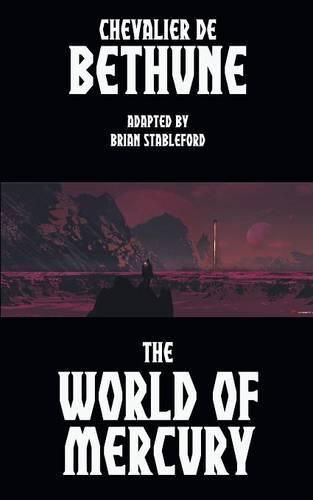Readings Newsletter
Become a Readings Member to make your shopping experience even easier.
Sign in or sign up for free!
You’re not far away from qualifying for FREE standard shipping within Australia
You’ve qualified for FREE standard shipping within Australia
The cart is loading…






This title is printed to order. This book may have been self-published. If so, we cannot guarantee the quality of the content. In the main most books will have gone through the editing process however some may not. We therefore suggest that you be aware of this before ordering this book. If in doubt check either the author or publisher’s details as we are unable to accept any returns unless they are faulty. Please contact us if you have any questions.
The World of Mercury was first published in 1750 before Voltaire’s MicromA©gas (1752) or Tiphaigne’s Amilec (1753). In developing his world, Bethune shaped one of the few Creationist fantasies entirely unaffected by religious dogma. His Mercury shines with originality, adventurousness and, especially, bizarrerie. The description of the aerial conflict between the defenders of Mercury’s Great Mountain and the monstrous invaders from the crust expelled from the Sun is triumphantly eccentric, a match in its colorful extravagance for any space battle featured in the great tradition of 20th century space opera.
$9.00 standard shipping within Australia
FREE standard shipping within Australia for orders over $100.00
Express & International shipping calculated at checkout
This title is printed to order. This book may have been self-published. If so, we cannot guarantee the quality of the content. In the main most books will have gone through the editing process however some may not. We therefore suggest that you be aware of this before ordering this book. If in doubt check either the author or publisher’s details as we are unable to accept any returns unless they are faulty. Please contact us if you have any questions.
The World of Mercury was first published in 1750 before Voltaire’s MicromA©gas (1752) or Tiphaigne’s Amilec (1753). In developing his world, Bethune shaped one of the few Creationist fantasies entirely unaffected by religious dogma. His Mercury shines with originality, adventurousness and, especially, bizarrerie. The description of the aerial conflict between the defenders of Mercury’s Great Mountain and the monstrous invaders from the crust expelled from the Sun is triumphantly eccentric, a match in its colorful extravagance for any space battle featured in the great tradition of 20th century space opera.